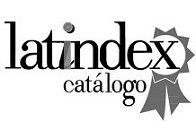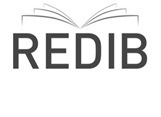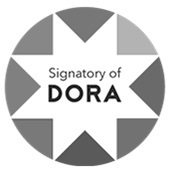Principles for CLIL Lesson Planning
DOI:
https://doi.org/10.30972/clt.237530Keywords:
bilingual teaching, CLIL approach, curricular planning, materials design, inclusive education, collaborationAbstract
Since the implementation of the CLIL approach in the world of bilingual education, teachers have been facing many challenges. The scarcity of materials that adopt a content and language integrated approach and catering for diversity in the bilingual classroom through curriculum design are two of the challenges discussed in this article. As a result, numerous studies have shown that the use of authentic or adapted materials not only promotes more active learning in real-life contexts, but also makes it possible to cater for the needs and interests of learners, leading to inclusive teaching. Moreover, collaboration between CLIL teachers is seen as one of the main ingredients for the success of the approach.
References
Anderson, Lorin y Krathwohl, David. (2001). A taxonomy for learning, teaching and assessing: a revision of Bloom's educational objectives. New York, Longman.
Anderson, Jason. (2023). Translanguaging in the ELT classroom. Modern English Teacher, (32)2, 46-50. https://bitly.ws/3ihz7
Ball, Phil. (2018). Innovations and Challenges in CLIL Materials Design. Theory Into Practice, 57(3), 222-231. https://doi.org/10.1080/00405841.2018.1484036 DOI: https://doi.org/10.1080/00405841.2018.1484036
Ball, Phil; Keith, Kelly y Clegg, John. (2015). Putting CLIL into Practice. Oxford, Oxford University Press.
Banegas, Darío Luis. (2018). Learning subject-specific content through ESP in a Geography-teaching programme: An action research story in Argentina. English for Specific Purposes, 50, 1-13. https://doi.org/10.1016/j.esp.2017.11.001 DOI: https://doi.org/10.1016/j.esp.2017.11.001
Banegas, Darío Luis. (2022). Research into practice: CLIL in South America. Language Teaching, 55(3), 379-391. https://doi.org/10.1017/S0261444820000622 DOI: https://doi.org/10.1017/S0261444820000622
Banegas, Darío Luis y Hemmi, Chantal (eds.). (2021). CLIL: Present and future. En International perspectives on CLIL (pp. 281-295). Switzerland, Palgrave Macmillan. https://doi.org/10.1007/978-3-030-70095-9_14 DOI: https://doi.org/10.1007/978-3-030-70095-9_14
Banegas, Darío Luis y Lauze, Cristina. (2020). CLIL and comprehensive sexual education: A case of innovation from Argentina. Profile, 22(2), 199-209. https://bitly.ws/3ihAu DOI: https://doi.org/10.15446/profile.v22n2.80528
Basse, Rachel y Pascual Peña, Iranzu. (2020). Does AfL promote discussion in CLIL classrooms? Exploring AfL techniques and their effect on classroom communication. En deBoer, Mark y Leontjev, Dmitri (eds.), Assessment and Learning in Content and Language Integrated Learning (CLIL) Classrooms: Approaches and conceptualisations (pp. 189-204). Switzerland, Springer Nature. https://doi.org/10.1007/978-3-030-54128-6_8 DOI: https://doi.org/10.1007/978-3-030-54128-6_8
Bauler, Clara y Kang, Emily (2020). Elementary ESOL and content teachers’ resilient co-teaching practices: A long-term analysis. International Multilingual Research Journal, 14(4), 338-354. https://doi.org/10.1080/19313152.2020.1747163 DOI: https://doi.org/10.1080/19313152.2020.1747163
Bloom, Benjamin. (1956). Taxonomy of educational objectives. Michigan, Longman.
Chidananda, A. L. (2019). Understanding Disciplines and School Subjects. Karnataka, Mangalore University.
Coxhead, Averil. (2017). Academic vocabulary in teacher talk: Challenges and opportunities for pedagogy. Academic Language in a Nordic Setting, 9(3), 29-44. https://doi.org/10.5617/osla.5845 DOI: https://doi.org/10.5617/osla.5845
Cummins, Jim. (2008). BICS and CALP: Empirical and Theoretical Status of the Distinction. En Hornberger, Nancy (ed.), Encyclopaedia of Language and Education (pp. 487-499). Boston, Springer. https://doi.org/10.1007/978-0-387-30424-3_36 DOI: https://doi.org/10.1007/978-0-387-30424-3_36
Erasmus+. (2024). CLIL for All: Attention to Diversity in Bilingual Education. European Commission. https://bitly.ws/3ihPs
Escobar Urmeneta, Cristina. (2020). Coteaching in CLIL in Catalonia. CLIL Journal of Innovation and Research in Plurilingual and Pluricultural Education, 3(2), 37-55. https://doi.org/10.5565/rev/clil.54 DOI: https://doi.org/10.5565/rev/clil.54
Fazzi, Fabiana y Lasagabaster, David. (2020). Learning beyond the classroom: students’ attitudes towards the integration of CLIL and museum-based pedagogies. Innovation in Language Learning and Teaching, 15(2), 156-168. https://doi.org/10.1080/17501229.2020.1714630 DOI: https://doi.org/10.1080/17501229.2020.1714630
Ferrando, Ernesto. (2019). La enseñanza de segundas lenguas mediante contenidos históricos: un modelo teórico-práctico para el diseño de materiales con el enfoque AICLE. LACLIL, 11(2), 275-307. https://doi.org/10.5294/laclil.2018.11.2.5 DOI: https://doi.org/10.5294/laclil.2018.11.2.5
Francisco Déniz, Sergio David y Mallorquín, María Saray. (2021). Estudio sobre la metodología llevada a cabo en el aula AICLE en un centro educativo público de Tenerife. Tendencias Pedagógicas, 38, 148-159. https://doi.org/10.15366/tp2021.38.013 DOI: https://doi.org/10.15366/tp2021.38.013
Frigols Martín, María Jesús; Marsh, David; Mehisto, Peeter y Wolff, Dieter. (2011). European Framework for CLIL teacher education. Strasbourg, Council of Europe Publishing. https://bitly.ws/3ihEv DOI: https://doi.org/10.1017/S0261444811000243
Garzón-Díaz, Edgar. (2021). From cultural awareness to scientific citizenship: Implementing content and language integrated learning projects to connect environmental science and English in a state school in Colombia. International Journal of Bilingual Education and Bilingualism, 24(2), 242-259. https://doi.org/10.1080/13670050.2018.1456512 DOI: https://doi.org/10.1080/13670050.2018.1456512
Giles, Amanda y Yazan, Bedrettin. (2020). ‘You’re not an island’: A middle grades language arts teacher’s changed perceptions in ESL and content teachers’ collaboration. RMLE Online, 43(3), 1-15. https://doi.org/10.1080/19404476.2020.1724045 DOI: https://doi.org/10.1080/19404476.2020.1724045
González, Gladys Marta Elena; Díaz, Diana Raquel y León, Elba Consuelo. (2021). A CLIL Curriculum Design for Future Professionals of Hospitality and Tourism Management. Latin American Journal of Content & Language Integrated Learning, 15(1), e1513. https://doi.org/10.5294/laclil.2022.15.1.3 DOI: https://doi.org/10.5294/laclil.2022.15.1.3
Hahn, Stephanie. (2019). The problem with materials in CLIL: Needs and perspectives of Austrian CLIL history teachers. CELTMatters, 3, 17-24.
Hasenberger, Thomas. (2018). “The science of it …”: designing and teaching a CLIL curriculum. CELTMatters, 2, 11-18. https://bitly.ws/3ihF9
Hutchinson, Caroline. (2022). Images of the Past: Teaching CLIL History and Critical Thinking through Visual Texts. The Journal of the Japan CLIL Pedagogy Association (J-CLIL), 4, 60-73.
Ikeda, Makoto. (2019). The maximisation of learning in CLIL by transregister and translanguaging. Diversity in CLIL in Plurilingual Communities of Practice. SlideShare. https://bitly.ws/3ihFD
Ikeda, Makoto; Izumi, Shinichi; Watanabe, Yoshinori; Pinner, Richard y Davis, Matthew. (2021). Soft CLIL and English language teaching: Understanding Japanese Policy, Practice and Implications. Londres, Routledge. https://doi.org/10.4324/9780429032332 DOI: https://doi.org/10.4324/9780429032332
Karabassova, Laura. (2018). Teachers’ conceptualization of content and language integrated learning (CLIL): Evidence from a trilingual context. International Journal of Bilingual Education and Bilingualism, 25(3), 787-799. https://doi.org/10.1080/13670050.2018.1550048 DOI: https://doi.org/10.1080/13670050.2018.1550048
Karabassova, Laura y Oralbayeva, Nurziya. (2023). CLIL Materials: From theory to practice. En Banegas, Darío Luis y Zappa-Hollman, Sandra (eds.), The Routledge Handbook of Content and Language Integrated Learning (pp. 328-340). London, Rouledge. DOI: https://doi.org/10.4324/9781003173151-27
Kavanagh, Barry. (2022). Online CLIL During the COVID-19 Pandemic: Can it be a Replacement for the Face-to-Face Classroom?. The Journal of the Japan CLIL Pedagogy Association (J-CLIL): JJCLIL, 4, 125-143.
Keogh, Conor. (2017). Using WhatsApp to Create a Space of Language and Content for Students of International Relations. Latin American Journal of Content and Language Integrated Learning 10(1), 75-104. https://doi.org/10.5294/laclil.2017.10.1.4 DOI: https://doi.org/10.5294/laclil.2017.10.1.4
Lazarević, Nina. (2019). CLIL teachers’ reflections and attitudes: Surviving at the deep end. Journal of Bilingual Education and Bilingualism, 25(2), 571-584. https://doi.org/10.1080/13670050.2019.1703897 DOI: https://doi.org/10.1080/13670050.2019.1703897
Lo, Yuen Yi. (2019). Development of the beliefs and language awareness of content subject teachers in CLIL: Does professional development help? International Journal of Bilingual Education and Bilingualism, 22(7), 818-832. https://doi.org/10.1080/13670050.2017.1318821 DOI: https://doi.org/10.1080/13670050.2017.1318821
Lopriore, Lucilla. (30 de mayo de 2014). CLIL: una lingua franca. La ricerca. https://bitly.ws/3ihIw
Mahan, Karin Rose. (2020). The comprehending teacher: Scaffolding in content and language integrated learning (CLIL). Language Learning Journal, 50(1), 74-88. https://doi.org/10.1080/09571736.2019.1705879 DOI: https://doi.org/10.1080/09571736.2019.1705879
Marongiu, Maria Antonietta. (2019). Teaching Materials and CLIL Teaching. Linguæ &. Rivista di lingue e culture moderne, 18(2), 81-104. https://doi.org/10.7358/lcm-2019-002-maro DOI: https://doi.org/10.7358/lcm-2019-002-maro
Mehisto, Peeter. (2012). Criteria for producing CLIL learning material. Encuentro: revista de investigación e innovación en la clase de idiomas, 21, 15-33.
Morton, Tom. (2020). Cognitive Discourse Functions: A Bridge between Content, Literacy and Language for Teaching and Assessment in CLIL. CLIL Journal of Innovation and Research in Plurilingual and Pluricultural Education, 3(1), 7-17. https://doi.org/10.5565/rev/clil.33 DOI: https://doi.org/10.5565/rev/clil.33
Nguyen, Minh Hue y Dang, Thi Kim. (2021). Exploring teachers’ relational agency in content–language teacher collaboration in secondary science education in Australia. The Australian Educational Researcher, 48, 1-18. https://doi.org/10.1007/s13384-020-00413-9 DOI: https://doi.org/10.1007/s13384-020-00413-9
Okuno, Yukiko. (2018). Nihongokyōshi no tame no CLIL (naiyō gengo tōgōgata gakushū) nyūmon [Introduction to CLIL for Japanese Language Teachers]. Japón, Bonjinsha.
Ornia Noriega, Andrea; Fernández Costales, Alberto y Herce Sánchez, Fernando. (2024). Una rúbrica para analizar libros de texto AICLE en Educación Primaria. Porta Linguarum Revista Interuniversitaria De Didáctica De Las Lenguas Extranjeras, (41), 259-277. https://doi.org/10.30827/portalin.vi41.27547 DOI: https://doi.org/10.30827/portalin.vi41.27547
Pérez Cañado, María Luisa y Siepmann, Philipp. (2022). Catering to Diversity in CLIL. Designing Inclusive Learning Spaces with ADiBE Digital Materials. Anglistik, (33)1, 203-222. https://doi.org/10.33675/ANGL/2022/1/16 DOI: https://doi.org/10.33675/ANGL/2022/1/16
Pham, Phuong Anh y Unaldi, Aylin. (2022). Cross-curricular collaboration in a CLIL bilingual context: the perceptions and practices of language teachers and content subject teachers. International Journal of Bilingual Education and Bilingualism, 25(8), 2918-2932. https://doi.org/10.1080/13670050.2021.1995320 DOI: https://doi.org/10.1080/13670050.2021.1995320
Prats, Joaquim y Santacana, Joan. (2011). Didáctica de la Geografía y la Historia. Barcelona, Editorial Grao.
Roomy, Andrew. (2022). A Lesson on Athleisure: An exercise in CLIL curriculum design. The Journal of the Japan CLIL Pedagogy Association (J-CLIL), 25-40.
Sánchez, María del Mar y Salaberri, María S. (2018). Planning CLIL units in primary education from a cognitive perspective. Revista de Estudios Ingleses Odisea, (19), 7-24. https://doi.org/10.25115/odisea.v0i19.1892 DOI: https://doi.org/10.25115/odisea.v0i19.1892
Savinykh, Anna. (2021). Framework for CLIL materials for Russian heritage. International Journal of Multilingual Education, (18), 1-34. https://doi.org/10.22333/ijme.2021.18001 DOI: https://doi.org/10.22333/ijme.2021.18001
Stein, Nikki. (2017). Language in schools. En Basic Education Rights Handbook (pp. 204-217). SECTION27, Johannesburg.
Turner, Marianne y Fielding, Ruth. (2020). CLIL Teacher training and teachers’ choices: exploring planned language use in the Australian context. Language, Culture and Curriculum, 34(3), 224-241. https://doi.org/10.1080/07908318.2020.1792920 DOI: https://doi.org/10.1080/07908318.2020.1792920
Villabona, Nerea y Cenoz, Jasone. (2022). The integration of content and language in CLIL: a challenge for content-driven and language-driven teachers. Language, Language and Curriculum, 35(1), 36-50. https://doi.org/10.1080/07908318.2021.1910703 DOI: https://doi.org/10.1080/07908318.2021.1910703
Yokono, Narumi. (2021). Using project-based CLIL and social media to contribute to local tourism: Integrating content, language, and technology. The Journal of the Japan CLIL Pedagogical Association (JJCLIL), 31-49.









52.jpg)









